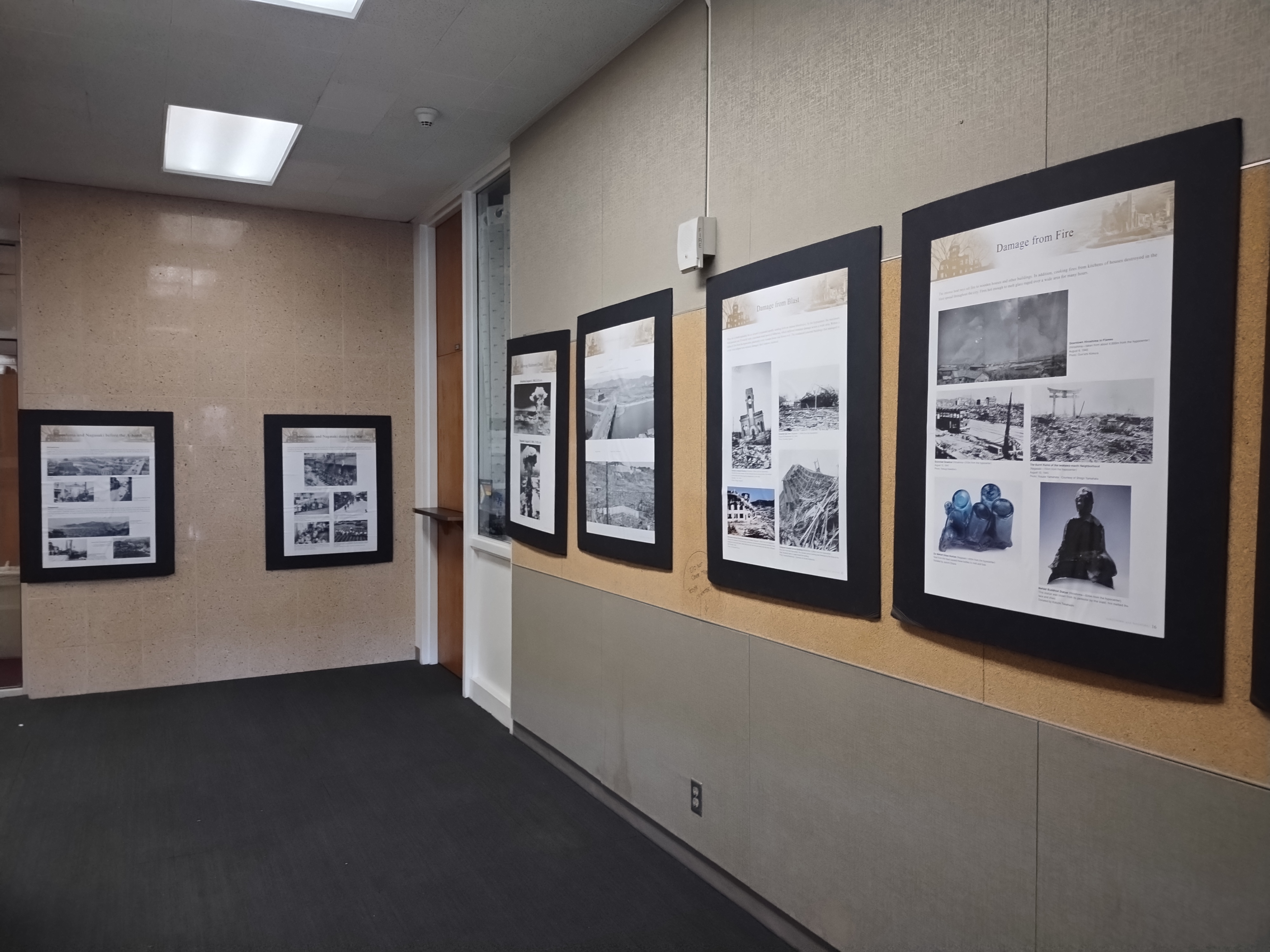‘Never Again’ Exhibit at Mt. Hood

Photo by Leo Fontneau
Starting May 20 and continuing through this Friday (June 7), MHCC and its Multicultural Diversity Resource Center have collaborated to host an exhibit and forum by the Wholistic Peace Institute and Hiroshima’s Ground Zero Museum called “Never Again” – that helps to vividly document and explains the dropping of the atomic bombs on Hiroshima and Nagasaki, Japan, through a collection of large posters and a public forum.
The commemoration includes a live presentation on Thursday (June 6) that features Teruko Yahata (8 years old at the time), one of the survivors of the atomic bomb dropped by U.S. armed forces on the city of Hiroshima on Aug. 6, 1945. (A second U.S. bomb dropped on Aug. 9, 1945 destroyed the city of Nagasaki; one day later, Japanese leaders signaled a surrender, effectively ending World War II.)
This hybrid event – hosted in Room AC1001 on the Mt. Hood campus from 5 to 7 p.m. on Thursday – will allow a guest speaker from the Ground Zero Museum (via Zoom) to give a virtual lecture and answer audience questions, along with a bombing survivor.
Also, Mt. Hood ceramics instructor John Hasegawa will discuss his participation in on the Ireicho Project, which produced a large book that includes the names of all Japanese Americans who were incarcerated during World War II. The volume is permanently on display at the Japanese American National Museum in Los Angeles.
FOCUS ON EDUCATION, PEACE
The Wholistic Peace Institute, a West Linn-based nonprofit group, reached out to the MDRC to see if it would be interested in hosting the exhibit.
Ernesto Vasquez, MRDC coordinator, said the exhibit provides further education on history that maybe not everyone is aware of – or at least the extent of the bombs’ devastation on Japan citizens, immediately and in the years to follow.
As May each year marks Asian American and Pacfic Islander Heritage Month, he said the exhibit was well-timed. That’s also due to the bombing anniversaries falling in summer, when fewer students on campus would see the displays.
Vasquez said the collaboration helps to honor “the history of people, especially marginalized communities, and to provide further cultural understanding.”
The exhibit was mounted in the Student Union Fireplace Gallery display wall on schedule, while the Library portaion was delayed a while due to difficulties finding suitable space and exposure.
Mark Peterson, an MHCC librarian employee, noted that the fabric-like material that lines the wall in the Library entry complicated matters. More of the display appears in the lobby area just outside the Library doors.
The Ground Zero Museum’s organization’s goal in sharing the display is perhaps best characterized by a description on one of its posters:
“Cooperating with cities and people in Japan and abroad who desire peace, Hiroshima and Nagasaki are raising consciousness regarding the inhumanity of nuclear weapons and working towards a peaceful world without them.”

Leave a comment